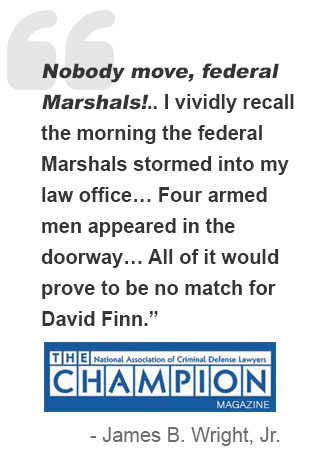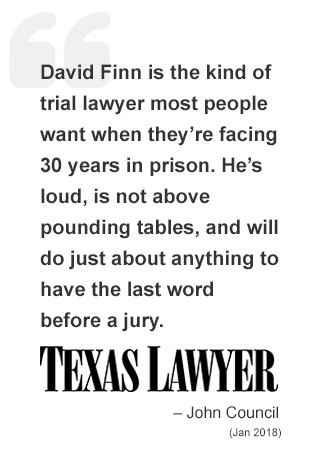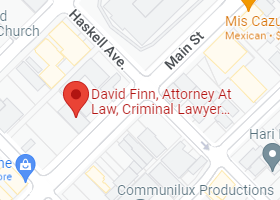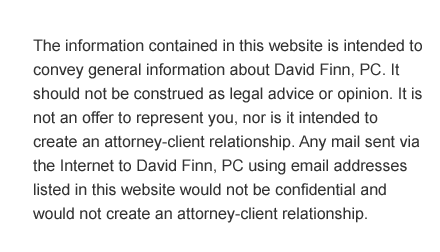


Library of Motions – Motion To Dismiss Or Transfer Based Upon Venue
THE UNITED STATES DISTRICT COURT
FOR THE EASTERN DISTRICT OF TEXAS
SHERMAN, DIVISION
| UNITED STATES OF AMERICA
VS. JOSE REYES |
§
§ § CRIMINAL NO. 4:05cr96(15) § § |
MOTION TO DISMISS OR TRANSFER BASED UPON VENUE
Defendant Jose Reyes, brings this motion to dismiss the present indictment against him based upon venue. Alternatively, Mr. Reyes moves for transfer of these proceedings to the United States District Court for the Northern District of Texas, Dallas Division, pursuant to Fed. R. Crim. P. 21(b). Additionally, Mr. Reyes asserts the Government’s choice of filing this case in the Eastern District of Texas is for the purpose of denying him a fair cross section of the community for jury service under the Sixth Amendment, a denial of equal protection under the Fifth Amendment and violates the Jury Selection and Service Act 28 U.S.C. § 1861.
Factual Background
The indictment against Jose Reyes names fifty-six, largely Hispanic or Immigrant defendants, who mostly reside in Dallas, Texas. The indictment asserts the defendants conspired to distribute drugs in the Eastern District of Texas. The specific act for which Mr. Reyes has been joined in the indictment involves Mr. Reyes allegedly helping secret drugs in a gas tank at 8919 Newhall, in Dallas, Texas.
The East Texas nexus that the Government has alleged in documents submitted to counsel allege an act related to money laundering in Plano, Texas, and an arrest of one defendant on I-30 with drugs. However, the majority of the conduct of the fifty-six defendants is in the Northern District of Texas.
The Law Regarding Venue and Arguments
Pursuant to Fed. R. Crim. P. 18, the Government “must prosecute an offense in a district where the offense was committed.” The trial court “must set the place of trial within the district with due regard for the convenience of the defendant, and the witnesses, and the prompt administration of justice.”
Congress has provided that:
Except as otherwise expressly provided by an enactment of Congress, any offense against the United States begun in one district and completed in another, or committed in more than one district, may be inquired of and prosecuted in any district in which such offense was begun, continued, or completed.
18 U.S.C. § 3237(a).
1. The Present Indictment Should be Dismissed
The right of the accused to be tried in the district in which the crime was committed rests upon both the United States Constitution and federal statutory law. Emphasizing the “unfairness and hardship to which a trial in an environment alien to the accused exposes him”, the Supreme Court has held that venue should not be treated as a mere formality. United States v. Johnson, 323 U.S. 273, 275-76, 65 S.Ct. 249, 250 (1944). Questions of venue in criminal cases, in fact, “raise deep issues of public policy,” bearing on “the fair administration of criminal justice and public confidence in it.” Id, at 276, 65 S.Ct. at 250. Venue is an element of any offense; the prosecution always bears the burden of proving that the trial is in the same district as the crime’s commission. United States v. White, supra, 611 F.2d at 536; United States v. Turner, 586 F.2d 395, 397 (5th Cir.), cert. denied, 440 U.S. 926, 99 S.Ct. 1258 (1979). Whether venue has been properly proved is a jury question. See Green v. United States, 309 F.2d 852 (5th Cir. 1962).
The Fourth Circuit’s decision in United States v. Stewart, 256 F.3d 231 (4th Cir. 2001), is instructive on facts similar to those of the present defendant. Dennever Livingston, Roger Stewart and Junior Sims were indicted in a multi-count indictment alleging a conspiracy to transport marijuana from Mexico, to Los Angeles, California, and then onto cities within the Eastern District of Virginia. Dennever Livingston got the marijuana from Mexico and packaged it for shipment. Junior Sims received the marijuana in Virginia and wired or mailed money to Los Angeles. Roger Stewart received the money in Los Angeles and forwarded it to Livingston. For purposes of this motion, Roger Stewart’s involvement in the conspiracy is central.
From 1995-1997, Roger Stewart received 136 Western Union wire transfers in Los Angeles, which totaled $ 345,840. Stewart also received 56 packets of money in the mail, in Los Angeles, during this time period. Id. at 235-236.
In April of 1997, all three individuals were indicted in the Eastern District of Virginia for conspiracy to distribute marijuana, in violation of 21 U.S.C. § 841 and 846 and money laundering in violation of 18 U.S.C. § 1956. Subsequent to trial, Stewart was convicted of money laundering charges. On Appeal, Stewart asserted that the overt act for which he was charged only occurred in Los Angeles, and thus dismissal based upon improper venue was warranted. The Government countered that the conduct was continuing and thus venue was proper in Virginia, where the money originated.
The Fourth Circuit addressed the specifics of Stewart’s case and found that venue was not proper in the Eastern District of Virginia based upon factors set out by the Supreme Court in United States v. Cabrales, 524 U.S. 1, 118 S.Ct. 1772 (1998) (adopting an Eighth Circuit “locus delicti” test for determining proper venue). Thus, the convictions were vacated.
In a footnote, the Fourth Circuit addressed the crux of defendant’s current argument. The Fourth Circuit stated:
Stewart also was charged with conspiracy to launder money. Because Stewart ultimately was acquitted of that charge, we need not address whether venue was proper with respect to the conspiracy count. We note, however, that venue in the Eastern District of Virginia arguably would have been improper on the conspiracy count with respect to Stewart unless, during the venue hearing, the Government was able to forecast some evidence demonstrating that Stewart, who had, at best, a very minor role in the alleged conspiracy, knowingly and voluntarily entered into a confederacy involving the Eastern District of Virginia. See United States v. Cabrales, 524 U.S. 1, 9, 118 S.Ct. 1772 (1998). (noting that venue would be proper for Cabrales on the conspiracy charge only if the government could prove that Cabrales entered into the agreement as alleged); United States v. Bowens, 224 F.3d 302, 311 n.4 (4th Cir. 2000) (“In a conspiracy charge, venue is proper for all defendants wherever the agreement was made or wherever any overt act in furtherance of the conspiracy transpires.”).
Id. at 241 n.3.
Thus, it is the defendant’s contention, that based upon the alleged act of Mr. Reyes, venue is not proper in the Eastern District of Texas, and the indictment should be dismissed so that it can properly be filed in the Northern District of Texas, Dallas Division, where the majority of the conspiracy allegedly occurred. Pursuant to the holding in Stewart, this will require a hearing in which the Government will be able to demonstrate, or forecast, some evidence, that Jose Reyes, who had, at best, a very minor role in the alleged conspiracy, knowingly and voluntarily entered into a conspiracy involving the Eastern District of Texas.
2. Transfer is Proper in this Case
Fed. R. Crim. P. 8 allows the joinder of two or more defendants if they are alleged to have participated in the same act or transaction or in the same series of acts or transactions constituting an offense or offenses. The defendants may be charged in one or more counts together or separately and all of the defendants need not be charged in each count. Fed. R. Crim. P. 8.
Whether joinder is proper is normally determined from the allegations in the indictment. See United States v. Faulkner, 17 F.3d 745, 758 (5th Cir. 1994). The proprietary of Rule 8 joinder is determined by the initial allegations of the indictment, which, barring arguments of prosecutorial misconduct are accepted as true. See United States v. Kaufman, 858 F.2d 994, 1003 (5th Cir. 1988); United States v. Harrelson, 754 F.2d 1153, 1176 (5th Cir. 1985). Joinder of defendants is proper under Rule 8 where the record, examined broadly, presents two conspiracies substantially interrelated by their facts and participants rather than two separate and distinct conspiracies. See United States v. Toro, 840 F.2d 1221, 1238 (5th Cir. 1988).
In the Fifth Circuit, proper joinder requires that the offenses charged “must be shown to be part of a single plan or scheme,” and that “proof of such a common scheme is typically supplied by an overarching conspiracy from which stems each of the substantive counts.” United States v. Lane, 735 F.2d 799, 805 (5th Cir. 1984). rev’d in part on other grounds, 474 U.S. 438 (1986). Under Rule 8, a “series” is something more than “similar” acts. See United States v. Marionneaux, 514 F.2d 1244, 1248 (5th Cir. 1975).
In the present case, the majority of the conduct allegedly occurred in Dallas, Texas. The incidents that occurred in the Eastern District of Texas were remote to the conspiracy and amount of forum shopping on the part of the Government.
Fed. R. Crim. P. 21(b) allows that upon the defendant’s motion, the court may transfer the proceeding, or one or more counts, against the defendant to another district for the convenience of the parties and witnesses and in the interest of justice.
The Supreme Court has identified ten factors that a court should consider when ruling on a Rule 21(b) motion. See Platt v. Minnisota Min. and Man. Co., 376 U.S. 240, 84 S.Ct. 769 (1964). These factors are: “(1) the residence of an individual defendant; (2) the location of possible witnesses; (3) location of events likely to be in issue; (4) location of documents and records likely to be involved; (5) disruption of defendant’s business unless the case is transferred; (6) expense to the parties; (7) location of counsel; (8) relative accessibility of place of trial; (9) docket condition of each district or division involved; and (10) any other special elements which might affect the transfer.” Id. 376 U.S. 243-44.
In the present case, the majority of the acts that are alleged in the indictment occurred almost exclusively in the Northern District of Texas. The majority of the defendants and witnesses can be located in Dallas. Mr. Reyes’ witnesses and family that will testify live in Dallas, Texas. Thus, factors one and two weigh in favor of transfer to Dallas. Factors three and four are split between the two locations, but the act alleged against the defendant, is exclusively in Dallas. Factors five through ten are not an issue in this case because the defendant is not a large corporation defending itself against criminal charges. Thus, Mr. Reyes would assert that the Northern District of Texas, Dallas Division is the proper place to try the present case. See United States v. Morris, 176 F.Supp.2d 668 (N.D.Tex. 2001)(Given factors that weigh on behalf of the transfer and other factors which are neutral, transfer is proper).
In addition to the holding of the Supreme Court, several circuits employ a substantial contacts test for ruling on Rule 21(b) motions. The substantial contacts test was first enunciated in United States v. Reed, 773 F.2d 477, 480 (2nd Cir. 1985). The test states:
a review of relevant authorities demonstrates that there is no single defined policy or mechanical test to determine constitutional venue. Rather, the test is best described as a substantial contacts rule that takes into account a number of factors — the site of the defendant’s acts, the elements and nature of the crime, the locus of the effect of the criminal conduct, and the suitability of each district for accurate fact finding . . . .
Id. See also United States v. Williams, 274 F.3d 1079, 1084 (6th Cir. 2001);United States v. Williams, 788 F.2d 1213, 1215 (6th Cir. 1986)(adopting the substantial contacts test); United States v. Chappell, 854 F.2d 190 (7th Cir. 1988), vacated on other grounds, 494 U.S. 1075, 110 S.Ct. 1800 (1990)(adopting the substantial contacts test);
Given this test, the factors again weigh in favor of Mr. Reyes. The site of the defendant’s acts were in Dallas, Texas. The elements and nature of the crime occurred largely in Dallas. The locus of the effect of the criminal conduct is Dallas is the most suitable district for accurate fact finding.
Mr. Reyes asserts that all factors considered by the Supreme Court and other Circuits point to Dallas as the location where this case should be tried. Requiring Mr. Reyes to stand trial in Sherman, Texas, a place remote from the alleged conduct and the alleged conspiracy would be prejudicial and requires a transfer.
Mr. Reyes moves that this action be dismissed, or in the alternative, transferred to the Dallas Division of the Northern District of Texas.
Cross Section Requirement of the Sixth Amendment
The American concept of the jury trial contemplates a jury drawn from a fair cross section of the community. . . . It is part of the established tradition in the use of juries as instruments of public justice that the jury be a body truly representative of the community.” Taylor v. Louisiana, 419 U.S. 522, 527, 95 S.Ct. 692 (1975) (internal quotation marks omitted). This requirement of a fair cross section is not without substantial limits — it does not guarantee that juries be “of any particular composition.” Id. at 538. All that is required is that “the jury wheels, pools of names, panels, or venires from which juries are drawn must not systematically exclude distinctive groups in the community and thereby fail to be reasonably representative thereof.” Id. (emphasis added). The objectives of the fair cross section requirement include avoiding “the possibility that the composition of the juries would be arbitrarily skewed in such a way as to deny criminal defendants the benefit of the common-sense judgment of the community” and avoiding the “appearance of unfairness” that would result from excluding “large groups of individuals, not on the basis of their ability to serve as jurors, but on the basis of some immutable characteristic such as race, gender or ethnic background.” Lockhart v. McCree, 476 U.S. 162, 175, 106 S.Ct. 1758 (1986).
The Jury Selection and Service Act (“The Act”) provides as follows:
All litigants in Federal courts entitled to trial by jury shall have the right to grand and petit juries selected at random from a fair cross section of the community in the district or division wherein the court convenes. It is further the policy of the United States that all citizens shall have the opportunity to be considered for service on grand and petit juries in the district courts of the United States, and shall have an obligation to serve as jurors when summoned for that purpose.
28 U.S.C. § 1861 (West 2001). The Act “seeks to ensure that potential grand and petit jurors are selected at random from a representative cross section of the community and that all qualified citizens have the opportunity to be considered for service.” United States v. Calabrese, 942 F.2d 218, 220 (3d Cir. 1991) (internal quotation marks omitted). Claims under the Act are analyzed using the same standard as a Sixth Amendment fair cross section claim. See United States v. Test, 550 F.2d 577, 584-85 (10th Cir. 1976)(en banc) (Act’s fair cross section standard is “functional equivalent of the constitutional ‘reasonably representative’ standard”).
When enacted, the Act required “each United States district court [to] devise and place into operation a written plan for random selection of . . . petit jurors that would be designed to achieve the [above-mentioned] objectives of sections 1861 and 1862.” 28 U.S.C. § 1863(a) (a) (West 2001). Congress determined that the principal source of names for the random selection should be either “the voter registration lists or the lists of actual voters.” Id. at § 1863(b)(2). The Act also provided: “The plan shall prescribe some other source or sources of names in addition to voter lists where necessary to foster the policy and protect the rights secured by sections 1861 and 1862 . . . .” Id.
In order to establish a prima facie violation of the fair cross section requirement of the Sixth Amendment and the Act, the defendant must demonstrate: (1) the group alleged to be excluded is a “distinctive” group in the community; (2) the representation of this group in jury venires is not “fair and reasonable” in relation to the number of such persons in the community; and (3) the under representation is caused by the “systematic exclusion of the group in the jury selection process.” Duren v. Missouri, 439 U.S. 357, 364, 99 S.Ct. 664 (1979). A defendant need not show discriminatory intent. See Id.at 368 n. 26 (“In contrast [to an Equal Protection claim], in Sixth Amendment fair cross-section cases, systematic disproportion itself demonstrates an infringement of the defendant’s interest in a jury chosen from a fair community cross section.”) And, “once a defendant has made a prima facie showing of an infringement of his constitutional right to a jury drawn a fair cross section of the community, it is the State that bears the burden of justifying this infringement by showing attainment of a fair cross section to be incompatible with a significant state interest.” Id. at 368.
Equal Protection Under the Fifth Amendment
An equal protection claim against the federal government is analyzed under the Due Process Clause of the Fifth Amendment. As the Supreme Court has held “equal protection analysis in the Fifth Amendment area is the same as that under the Equal Protection Clause of the Fourteenth Amendment.” Buckley v. Valeo, 424 U.S. 1, 93, 96 S.Ct. 612 (1976), see also Adarand Constructors, Inc. v. Pena, 515 U.S. 200, 217, 115 S.Ct. 2097 (1995); Weinberger v. Wiesenfeld, 420 U.S. 636, 638 n.2, 95 S.Ct. 1225 (1975); Bolling v. Sharpe, 347 U.S. 497, 499, 74 S.Ct. 693 (1954).
Dallas Division, Northern District of Texas
After the Jury Selection Service Act contained at 28 U.S.C § 1861 et. Seq. the Northern District of Texas wrote a new jury plan on May 14, 1998. See Misc. Order 5, N.D. Tex. The Northern District of Texas noted that the main source for the jury pool would remain the voter registration roll maintained by each county within the division. However, in addition to voter registration, the Northern District of Texas incorporated the plain language of 28 U.S.C. § 1861 by incorporating driver’s license rolls. “The lists of licensed drivers will supplement the voter registration lists to the extent possible” by using Texas driver’s license rolls. Thus, the Northern District of Texas has fully complied with the intent and purpose of the Jury Selection and Service Act.
Census Numbers for Dallas Division
Pursuant to the Northern District of Texas Jury Plan, Dallas Division jurors are selected from Dallas, Ellis, Hunt, Johnson, Kaufman, Navarro and Rockwall Counties. The 2000 census numbers supplemented by the 2003 estimates demonstrate the following:
(2000 racial percentages)
County 2003 est. population % Hispanic % non-White % White
Dallas 2,284,096 29.9 55.7 44.3
Ellis 124,411 18.4 28.7 71.3
Hunt 81,024 8.3 20.1 79.9
Johnson 139,068 12.1 16.8 83.2
Kaufman 81,955 11.1 23.7 76.3
Navarro 47,331 15.8 34.4 65.6
Rockwall 54,630 11.1 16.9 83.1
Totals
2,812,515 752,028 1,392533 1,422,982
Weighted Percentages 26.7 49.5 50.5
Thus, in the Dallas Division, 26.7 percent of the population is Hispanic and 49.5 percent of the population is non-Caucasian.
Sherman Division, Eastern District of Texas
After the Jury Selection Service Act, the Eastern District of Texas formulated a jury plan which in effect blessed the old system and did not incorporate the requirement of other source lists other than voter registration for selection as a potential juror. The plan violates the plain language of the Jury Selection Service Act. Thus, pursuant to section four of the Eastern District Plan, voter registration is the only means of being a qualified juror in the Eastern District of Texas.
Census Numbers for Sherman Divison
Pursuant to the Eastern District of Texas Jury Plan, juries in the Sherman Division are selected from Collin, Cooke, Delta, Denton, Fannin, Grayson, Hopkins and Lamar Counties. The 2000 census numbers supplemented by the 2003 estimates demonstrate the following:
(2000 racial percentages)
County 2003 est. population % Hispanic % non-White % White
Collin 597,147 10.3 23.9 76.1
Cooke 37,996 10.0 15.2 84.8
Delta 5,451 3.1 13.3 86.7
Denton 510,795 12.2 24.0 76.0
Fannin 32,276 5.6 15.8 84.2
Grayson 115,153 6.8 16.0 84.0
Hopkins 32,681 9.3 18.8 81.2
Lamar 49,464 3.3 19.3 80.7
Totals
1,380,963 142,100 311,024 1,069,939
Weighted Percentages 10.3 22.5 77.5
Thus, in the Sherman Division of the Eastern District of Texas, only 10.3 percent of the population is Hispanic and 77.5 percent of the population is Caucasian.
Argument on Equal Protection and Cross-Section
Mr. Reyes requests a hearing on this motion in order that he may present the statistical and factual basis of his claim in more detail. However, the raw census numbers demonstrate that if you want a white jury in the State of Texas, the Sherman Division of the Eastern District of Texas will give a 77.5% chance with only a 10.3% chance of having a Hispanic juror. In contrast, in the Dallas Division, there is an even chance of getting a white juror and a 26.7% chance of having Hispanics on the jury. Additionally, in Dallas, the jury pool is drawn from driver’s licenses which increases minority participation. Mr. Reyes asserts what has happened in this case is Government forum shopping in order to get a white jury to convict Hispanic and other minority defendants. Mr. Reyes asserts him being tried in the Sherman Division violates his equal protection rights. Additionally, Mr. Reyes asserts that he can present statistical evidence that will demonstrate the Eastern District Jury Plan, in comparison to the Northern District Jury Plan, violates the cross-section requirement of the Sixth Amendment and the Jury Selection Service Act.
Lastly, Mr. Reyes will need the assistance of a demographics expert in order to present this claim. Mr. Reyes requests that the hearing not be scheduled until thirty days after the Court’s determination on a separate motion that will be filed within five days of the filing of this motion for the appointment of an expert to assist in the presentation of the statistical demographics in support of this motion.
Respectfully submitted,
_________ /s/____________
Don Bailey
Attorney for Mr. Reyes
SBN 01520480
903-892-9185
309 N. Willow
Sherman, Texas 75090
Certificate of Service and Conference
This document was filed electronically with a courtesy copy furnished to Ms. Heather Rattan, AUSA.
I conferred with Ms. Rattan concerning this motion on July 18, 2005. Ms. Rattan is opposed to the present motion.
___________ /s/______________
Don Bailey
THE UNITED STATES DISTRICT COURT
FOR THE EASTERN DISTRICT OF TEXAS
SHERMAN, DIVISION
| UNITED STATES OF AMERICA
VS JOSE REYES |
CRIMINAL NO. 4:05cr96(15)
|
ORDER
Came on for consideration defendant’s motion to Dismiss or Transfer the present action
because of venue and related argument regarding equal protection, cross-section and the Jury
Service and Selection Act. Having considered same, it is
ORDERED that a hearing will be conducted before this Court on September ____, 2005,
at 9:00 a.m. to allow the parties to present evidence and testimony regarding the equal protection,
cross-section and Jury Service and Selection Act claims.
SIGNED this _______ day of ________________, 2005.
________________________________
PAUL BROWN
UNITED STATES DISTRICT JUDGE
See Article II, § 2, Cl. 3, the Sixth Amendment, and Rule 18, Fed. R. Crim. Proc.
The above discussion concerning rule 8 was taken from the opinion by the Honorable Joe Kendall in the Northern District of Texas. See United States v. Morris, 176 F.Supp.2d 668, 671 (N.D. Tex. 2001).
Phone Numbers
Office: (214) 538-6629







